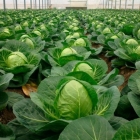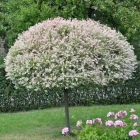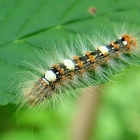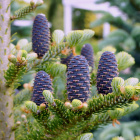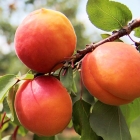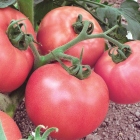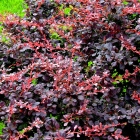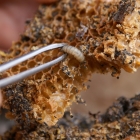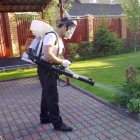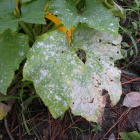Grow up in the cells of the rabbit. The owner rejoices how they fly all that neither put in the feeder, as having fun. But there were something minted something, they began to move little, lost appetite. Many muit and breast have become wet; 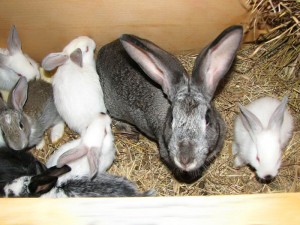 the animals began to torment the thirst, diarrhea, which alternate with short-term constipation. And feces are silent, greenish tint, with blood and mucus. Urination frequent-and gradually. Animals will lose weight quickly, but due to the fact that gases are constantly formed in the intestines, it is imperceptible. Taking a rabbit into the hands, the owner feels the skin, ribs and swollen tummy.
the animals began to torment the thirst, diarrhea, which alternate with short-term constipation. And feces are silent, greenish tint, with blood and mucus. Urination frequent-and gradually. Animals will lose weight quickly, but due to the fact that gases are constantly formed in the intestines, it is imperceptible. Taking a rabbit into the hands, the owner feels the skin, ribs and swollen tummy.
If you urgently do not assist, later the animal will clarify the head back, pull the rear legs, and the front will make swimming movements. Digested rabbits aged 1-4 months in the first 2-3 weeks after the appearance of signs of the disease.
This is coccidiosis. The surviving animals are then "zees" and disseminate diseases.
The causative agent is the parasitic protozoa (consisting of just one cell). Experts call it coccidia, or rather, Eymeria. Cocidias include not only Eyerie, but also other simplest, for example, toxoplasm (also dangerous parasites). Eymery is the smallest balls visible only under the microscope. (So, the exact diagnosis can only be put in the laboratory) these "balls" have special organs with which they penetrate the cells of animals and eat there and multiply. Having hide in rabbits some parasites are embedded in cells, lining the bile liver ducts, and others in the walls of a thin or thick intestinal department. After that, the pathogen is intensively divided by forming huge accumulations, which are then scattered and penetrated into neighboring cells, causing a chain reaction. The process of damage to organs is so fast, which resembles the purification of paper and opens access to microbes from the bowel content.
In the end, parasites are connected to pairs, covered with a dense shell and go into the external environment in the form of small taurus. In each of them, 8 subsidiaries are formed in the first 3-4 days. Sick animal can allocate hundreds of millions of Eyerie daily or, as they are customary to call them in practice, coccidia.
Most often infected rabbits, and in the first days of life, swallowing parasites from polluted nipples of the mother, as well as with feed and water. Cocidia can make mice, rats, insects. Even with the inventory you can put them in the rabbit. But there is an exit from the position after all. Parasites can be destroyed with chlorine and haired lime or heating to 80-100 °.
After slaughtering the owner of overdone or sick rabbits, the master sees that the liver is increased 5-7 times, the surface of the surface and in the subtle department of the intestine are noticeable by grayish-white or yellowish nodules. More often they rounded shapes the size of a wicked grain to a pea and filled with a curly mass. The walls of the gallbladder are inflamed. However, it should be borne in mind that such a picture may be in some infectious diseases. The exact diagnosis will be made only in the laboratory.
To cure a sick animal, it is useful to pick up a diet of dairy-sour products for him (yoke, serum), Hercules, cereal crooks, a delicious sudidal haya, with forest edges - with a dandelion, chamomile, alfaling. Horse sorrel, feed cabbage, birch and oak branches, in a separate feedushka must be kept salt and chalk.
A valuable binder in this case will be acorn briquettes. They are easy to cook - mix crushed dried acorns with boiled potatoes and bran, blind briquettes and drown. From drugs used on the recommendations of the eimerid-tick veterinary doctor, antibiotics and sulfonamide preparations.
To avoid coccidiosis, the place for the rabbit is better to choose the look and higher, preferably away from the cleansing structures, rivers and streams. The uterine population can be kept separately from young people. You can prevent the disease, setting rabbits in cells with a mesh floor and the size of 18x18 mm cells, setting them at an altitude of 70-75 cm. We will not forget and disinfect cells and feeders.
Coccidiosis in rabbits
Comments leave a comment
 Start a discussion ...
Start a discussion ...

